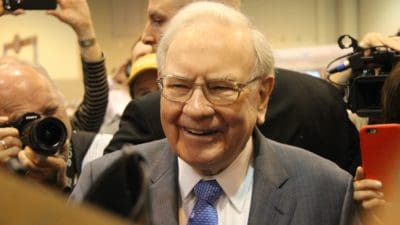Income investors naturally place great store by dividend yield.
On a yield of 5%, they know that every thousand pounds they invest will return £50 in dividends. And on a yield of – say – 2%, every thousand pounds they invest will return only £20.
I know which I prefer – and I know which they prefer, too.
But dividend yields aren’t the whole story. And looking at dividend yield in isolation can lead the unwary into traps.
Too good to be true?
And one trap in particular is wickedly pernicious: the assumption that the past is a reliable guide to the future.
Because a high dividend yield may well reflect a share price that has fallen, precisely because investors fear that there are doubts regarding either the viability of the business itself, or the sustainability of the business’s dividends.
So in general, it’s best to be wary of dividend yields that are significantly higher than those prevailing elsewhere – with ‘elsewhere’ usually being defined as either the market’s average dividend yield, or alternatively the average dividend yield of the particular sector of the market in question.
A rule-of-thumb that I use is to look especially carefully at dividend yields that are more than 50% higher than the market average. So on today’s FTSE 100 dividend yield of 4.35% (at the time of writing), say, I’d be fairly comfortable with dividend yields of 6.5% or less, but above that, then I’d be taking a more considered view.
Locking-in income
Sometimes, the explanation seems to be that a given share has simply fallen out of favour for a period.
Should you invest £1,000 in Lloyds Banking Group right now?
When investing expert Mark Rogers has a stock tip, it can pay to listen. After all, the flagship Motley Fool Share Advisor newsletter he has run for nearly a decade has provided thousands of paying members with top stock recommendations from the UK and US markets. And right now, Mark thinks there are 6 standout stocks that investors should consider buying. Want to see if Lloyds Banking Group made the list?
I’ve made purchases of brewing company Marston’s shares at dividend yields of almost 8%, for instance, and yet been relatively sanguine about it, judging the share prices’s post-referendum malaise to be temporary.
It helps, too, that the share prices of other brewing companies – such as Greene King – have more or less mirrored Marston’s decline, providing a good example of why looking at a sector’s dividend yield can be helpful.
In the past few months, Marston’s share price has rallied by 20% or so, and so the dividend yield has fallen to a more modest 6.6% – but of course, in cash dividend terms, I’m still banking the 8% or so that I bought in at.
Historic vs. forecast
Most of the dividend yield figures that you’ll see out on the Internet are so-called ‘historic’ yields in one form or another. Simply put, they take actual dividends that have been paid, and express them as a percentage of today’s share price.
The danger in such a backwards-looking perspective is that it can ignore publicly available information about future dividends. A company may have announced a dividend cut, for instance, or suspended dividend payments altogether – information which will only show up in a historic dividend yield calculation insofar as the impact on the share price.
For this reason, I’ve long been a fan of ‘forward’, ‘forecast’ or ‘prospective’ dividend yields – all of which are a different way of saying the same thing.
Which is this: for popular shares, covered by the analyst community, future dividend payments are estimated by analysts. Forecast dividends simply take the average value of these estimates, and plug that into the calculation, instead.
The downside? There are two. First, analysts’ estimates might be wrong. And second, these days, forecast dividends are more difficult to find on the internet.
Check the history
Finally, I’m also a believer in looking at historic dividend data. This information – which is readily available on the usual websites over short periods, and often on companies’ own investor websites for much longer periods – can be really useful.
First, it provides an insight into the sustainability or quality of a company’s dividend. Is there a history of dividend cuts, or even suspensions? How frequently – and how recently?
Aviva, for instance, offers an attractive-looking dividend yield of 7.2% based on today’s share price. But look closely at the company’s dividend history, and you’ll see recent dividend cuts – a cut of 27% or so in 2009, and another cut of a similar proportion in 2012. Might history repeat itself?
Secondly, historic dividend data can provide a useful insight into historic rates of dividend growth. There’s no guarantee that these will continue into the future, of course, but it’s still handy information to throw into the mix.
Imperial Brands, for instance, paid a dividend of 28.7p in 2002, adjusted for 2008’s rights issue. Last year, the company paid out a whopping 187.8p – a compound growth rate of over 12% a year. That’s a pretty decent growth record. Perversely, the dividend yield is also 12%, indicating that the market doesn’t believe that dividend growth of 10% or so a year can be sustained for much longer.
The appeal to yield-hungry investors is obvious. But so are the risks.







